01:00
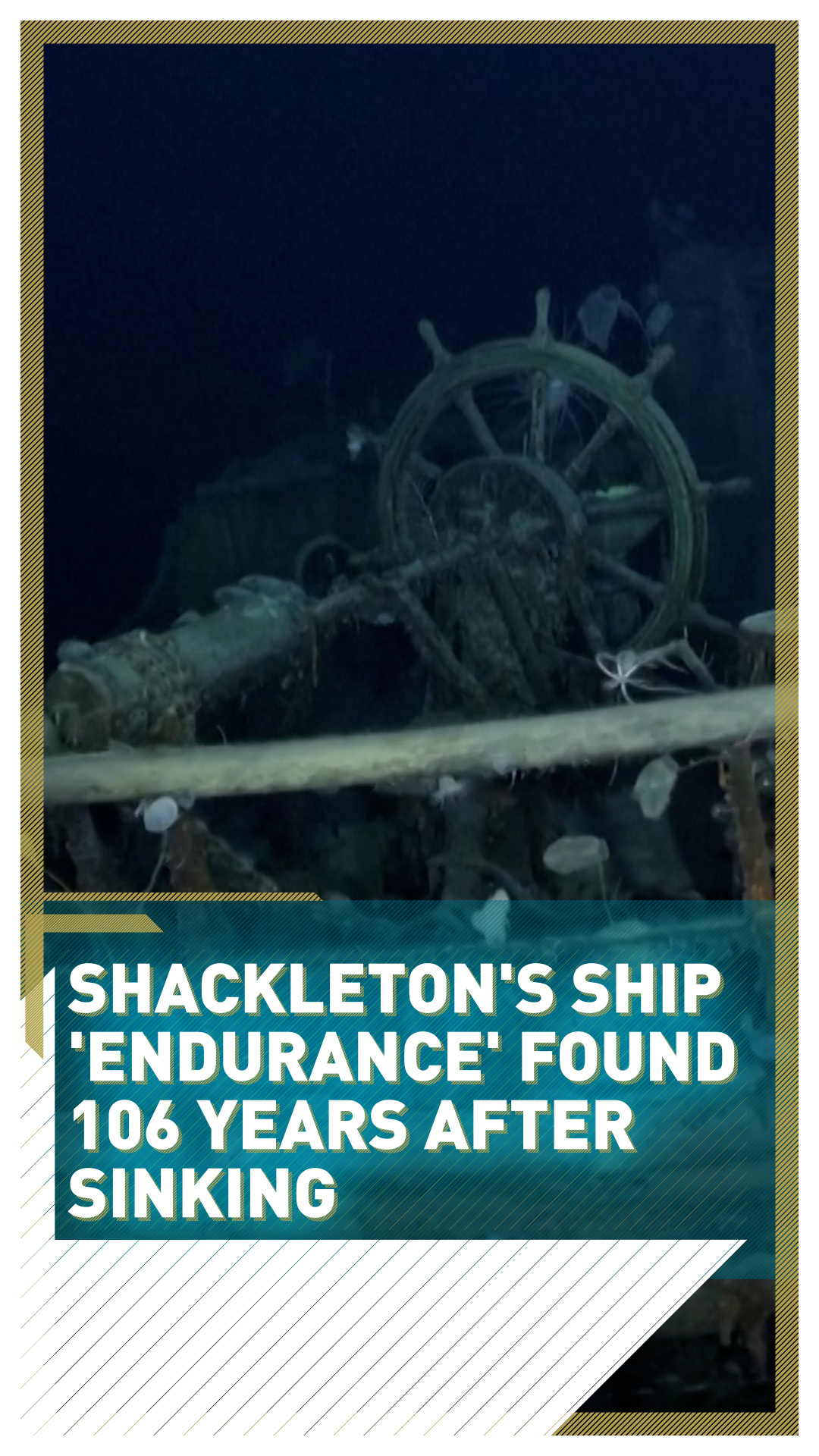
Ernest Shackleton's "Endurance" has been discovered off the coast of Antarctica 106 years after the ship was crushed by pack ice and sank during the legendary expedition of the Anglo-Irish explorer and his crew.
The wreckage was found 3,008 meters below the surface in the Weddell Sea, about six kilometers from where it was abandoned by Shackleton's crew in 1915.
The Endurance22 mission team that found the wreck said it was the world's most challenging shipwreck search. Previous attempts to find the ship had failed because of the hostile conditions of the Weddell Sea, which Shackleton himself had described as "the worst portion of the worst sea in the world."
The three-masted sailing ship was in a well-preserved state, thanks to the freezing temperatures of the waters and the fact that ocean life doesn't seem to have damage it.
CLICK ON THE ARROWS TO SCROLL THROUGH THE GALLERY
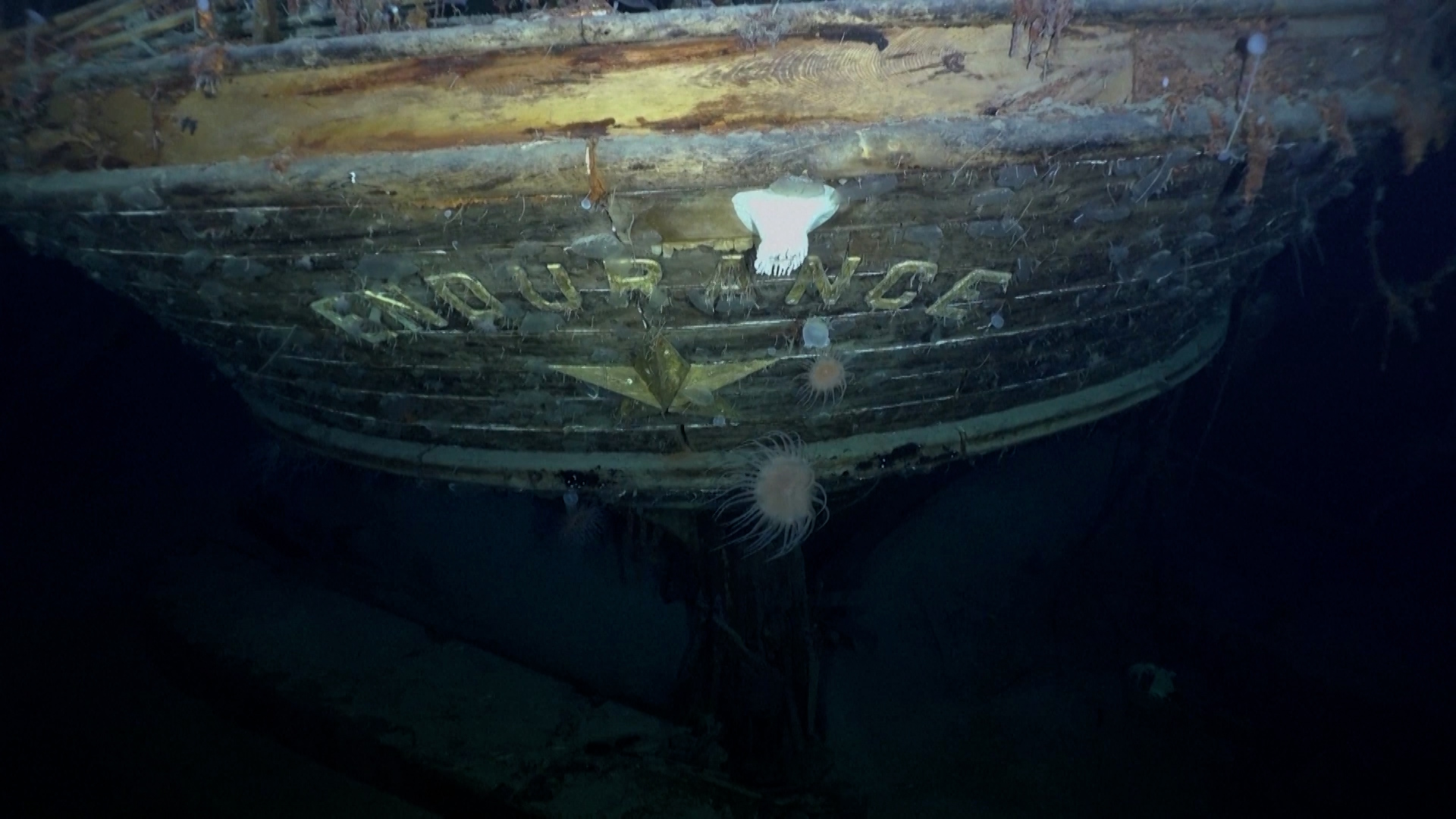
The name of the ship is still visible on the stern. /FALKLANDS MARITIME HERITAGE TRUST, NATIONAL GEOGRAPHIC/AFP
The name of the ship is still visible on the stern. /FALKLANDS MARITIME HERITAGE TRUST, NATIONAL GEOGRAPHIC/AFP
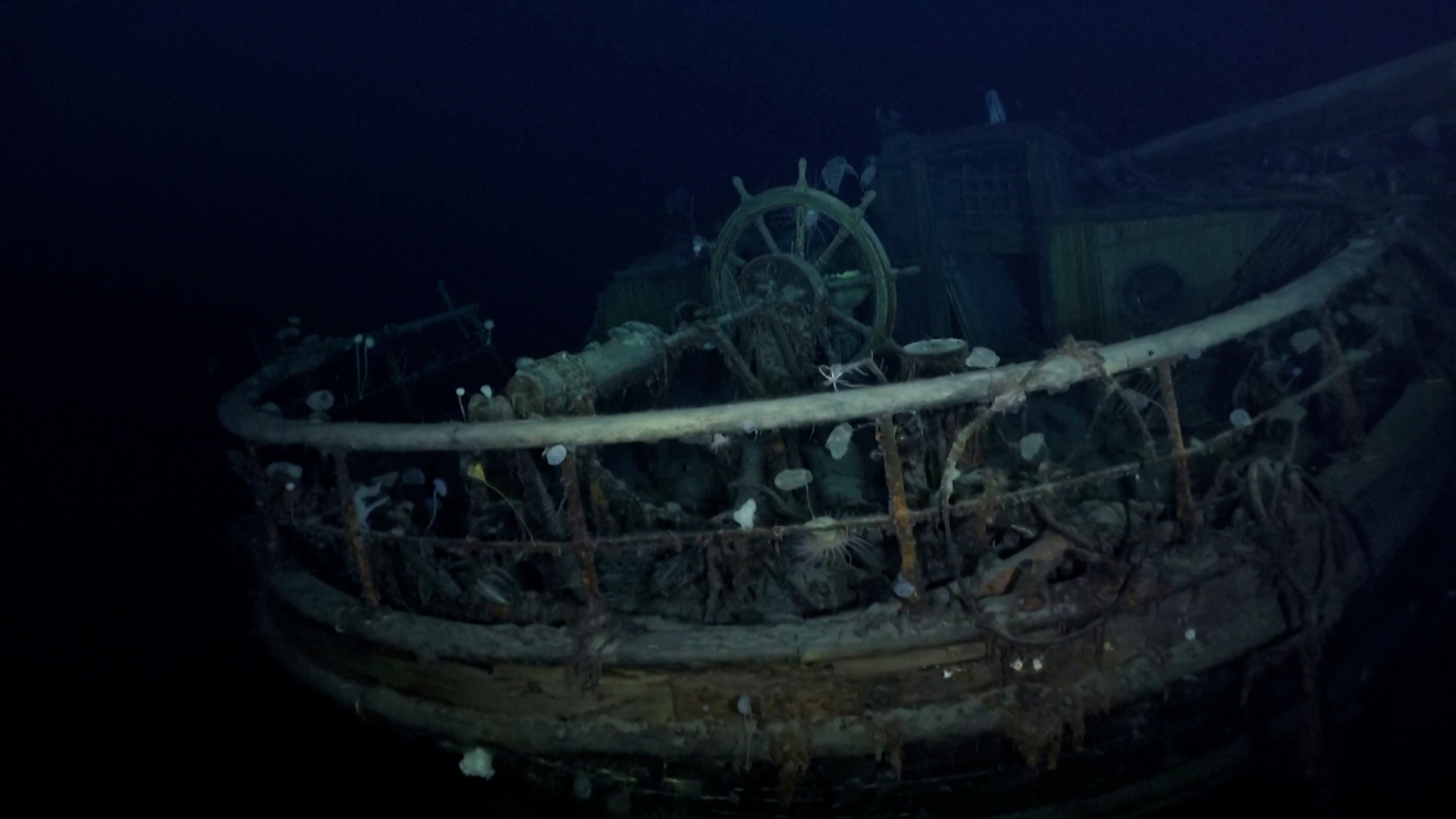
The expedition team said the wreck was in brilliantly preserved conditions. /FALKLANDS MARITIME HERITAGE TRUST, NATIONAL GEOGRAPHIC/AFP
The expedition team said the wreck was in brilliantly preserved conditions. /FALKLANDS MARITIME HERITAGE TRUST, NATIONAL GEOGRAPHIC/AFP
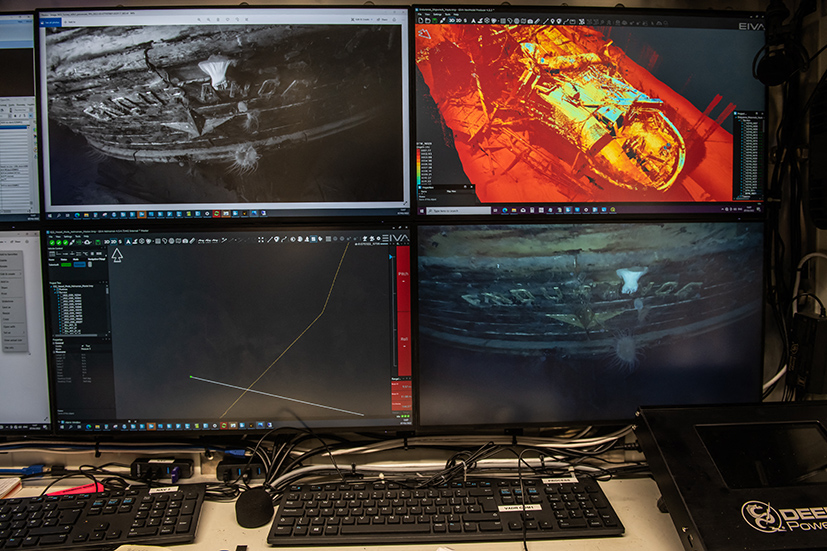
This handout picture released by the Falklands Maritime Heritage Trust shows photo, video and laser pictures of the Ernest Shackleton's Endurance displayed in the control room of the AUV on board of SA Agulhas II during the Endurance22 expedition. /ESTHER HORVATH/FALKLANDS MARITIME HERITAGE TRUST/AFP
This handout picture released by the Falklands Maritime Heritage Trust shows photo, video and laser pictures of the Ernest Shackleton's Endurance displayed in the control room of the AUV on board of SA Agulhas II during the Endurance22 expedition. /ESTHER HORVATH/FALKLANDS MARITIME HERITAGE TRUST/AFP
The underwater drones which reached the wreckage showed the "Endurance" is in a remarkably good condition, with its name still clearly visible on the stern.
"We are overwhelmed by our good fortune," said Mensun Bound, the expedition's Director of Exploration.
"This is by far the finest wooden shipwreck I have ever seen. It is upright, well proud of the seabed, intact, and in a brilliant state of preservation."
Shackleton and his crew were on a mission to make the first land crossing of Antarctica, when their ship "Endurance" became stuck in pack ice.
Ten months after the ship first became stranded on the ice, the crew was forced to abandon it, as freezing water started to bring the "Endurance" down. All 28 expedition members made it back home after a 17-day escape through miserable, life-threatening conditions, defying perilous landscapes, freezing temperatures, and plunging morale.
They trekked across the sea ice, surviving on seals and penguins (and sadly some of their sled dogs too), before sailing off with three small landing boats from the Endurance to Elephant Island. From there, Shackleton and his 27 men set off to South Georgia, were they rescued by the staff at a whaling station.
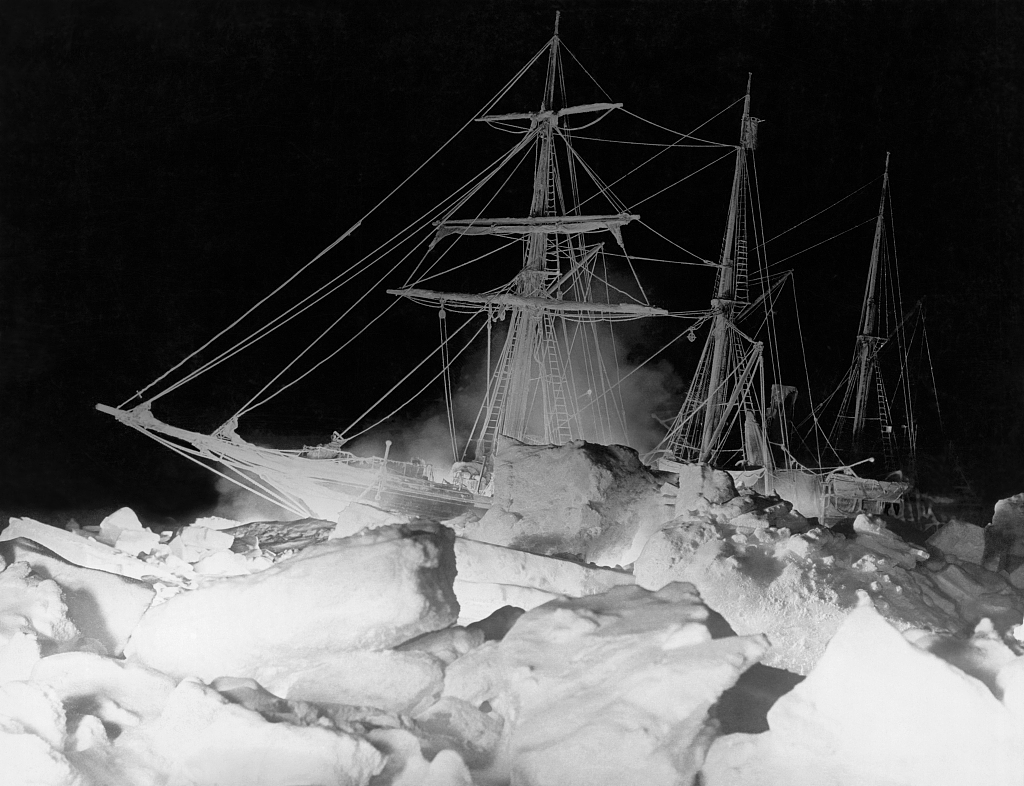
The "Endurance" got stranded on the ice in January 1915. No expedition before was able to find it. /Underwood Archives/Getty Images via VCG
The "Endurance" got stranded on the ice in January 1915. No expedition before was able to find it. /Underwood Archives/Getty Images via VCG
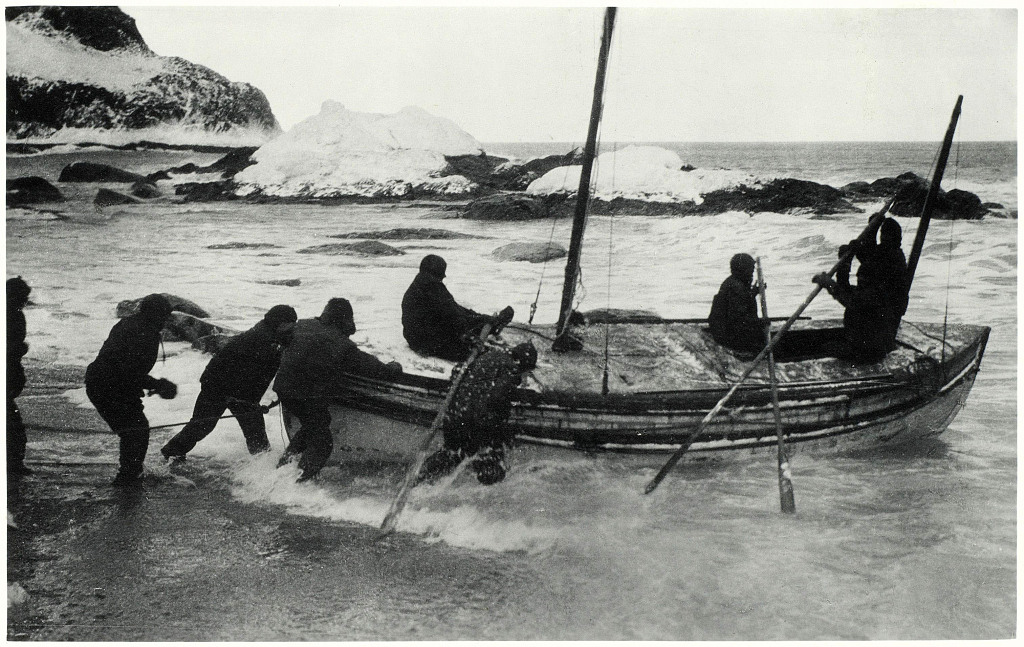
The 1914-1917 Antarctic expedition, remembered as one of humanity's greatest feats of heroism, was stranded in freezing cold for 10 months. /Bonhams/BNPS via VCG
The 1914-1917 Antarctic expedition, remembered as one of humanity's greatest feats of heroism, was stranded in freezing cold for 10 months. /Bonhams/BNPS via VCG
The underwater drones show that apart from a mast snapped in two across the deck, the ship appeared in great condition.
The wreck is considered a historic site under the Antarctic Treaty. Explorers were allowed to film and scan the ship, but not to touch it at all. Any artefacts inside the ship will have to remain at the bottom of the ocean as a memorial to one of the greatest survival stories in maritime history.
Source(s): AFP
,Reuters

